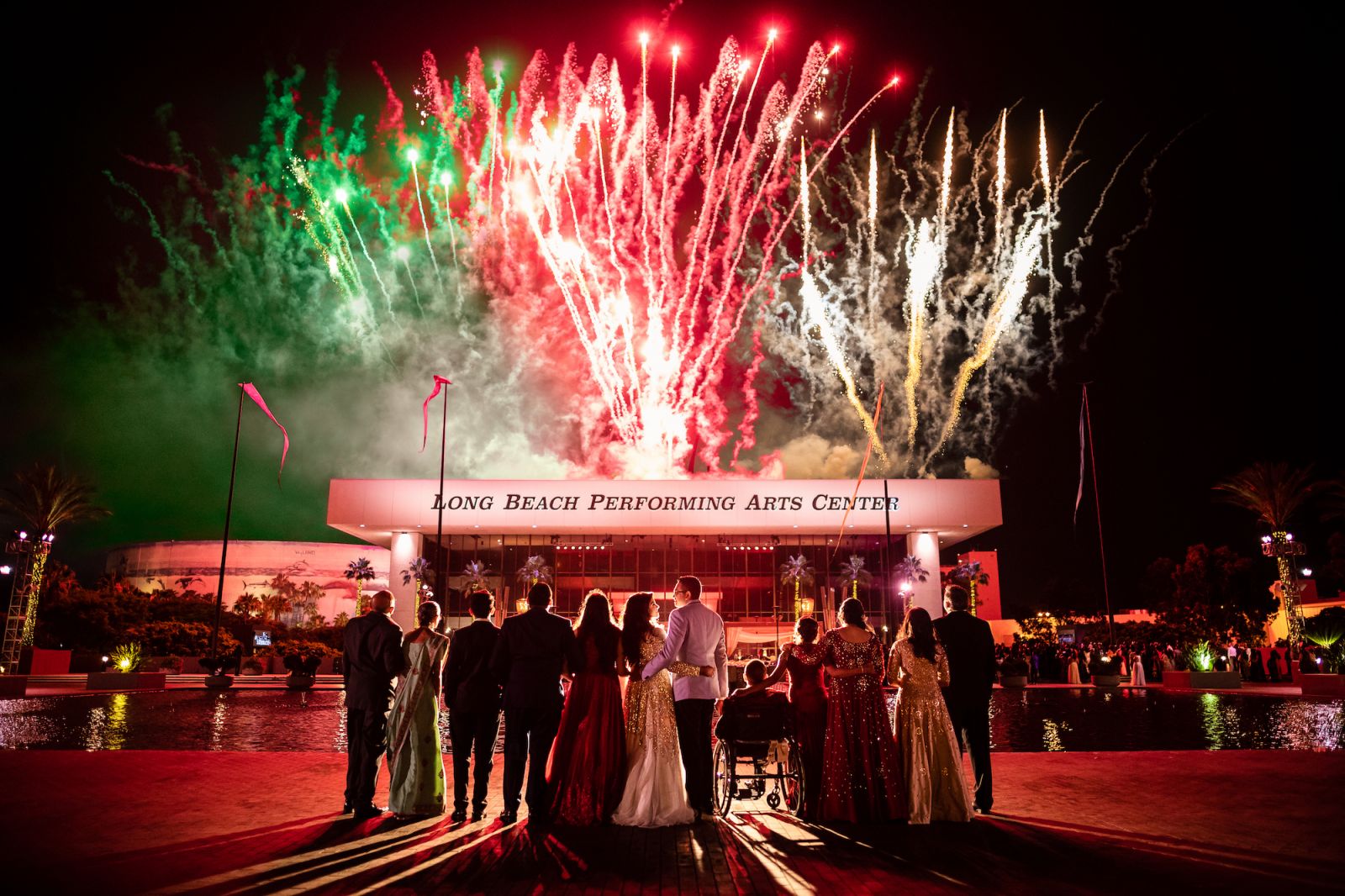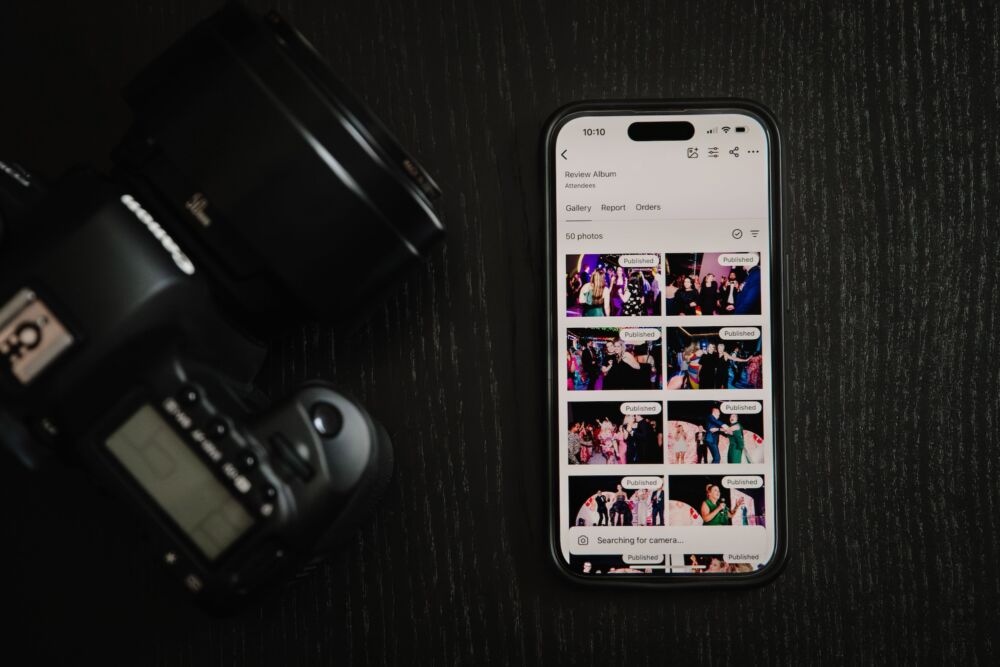People often ask us how to take a good photo. As a studio, we’ve tried to develop a methodology so that we can consistently create amazing images. While studying our art over the last decade, we compiled a list of ten characteristics most often found in the best photos. While we use examples from our wedding and engagement portfolio for the images below, these rules apply to all genres of photography.
If there is one overarching characteristic whose importance precedes that of all the characteristics listed in this article, it’s that every image needs to have a purpose. The image should tell a story or capture a unique moment in a meaningful way. If you comb through your portfolio and find yourself wondering why you captured a particular image, then there’s a good chance it’s lacking some or all of the following characteristics.
While it is highly unlikely that a given image (even an amazing photo) will include all of these characteristics, try to combine as many as possible and always keep composition in mind. Without any further delay, here are 10 Characteristics of Great Photos.
10 Characteristics of Great Photos
1 – A Good Photo Has a Compelling Composition
Most basic photography guides include common compositional concepts like the rule of thirds and rules of symmetry, but what other techniques can we use to create compelling compositions? Some less common techniques involve negative space, leading lines, depth of field, and framing. I mention this rule first because it doesn’t matter which particular style, technique, or rule you follow, so long as every image is thoughtfully composed. There will be times when composition takes a back seat in order to just grab the shot, but it should otherwise be considered whenever possible.

The image above uses one of the most common compositional rules, the rule of thirds, in two ways. First, the dunes occupy two-thirds of the image horizontally, leaving the sun & sky to fill the final third. Secondly, the couple has been placed near the upper left intersection of the horizontal and vertical thirds. Although the rule is commonly practiced, this image exemplifies why it is so effective, especially in this scene from Dubai.

The image above features the dynamic symmetry of continuous spiral, which is often found in both nature and architecture. There are mathematical equations concerning ratios that explain in technical terms why this is pleasing to the eye, but it’s easy enough to notice how the lines effectively lead to the subjects, who’ve been placed in the lower left third of the image. Of course, the dramatic lighting also plays a role in minimizing distractions and drawing the viewer’s focus to the brightest part of the photo.

The photo above features several compositional components, including leading lines, the rule of thirds, and unique framing. The leading lines in the scene draw the viewer’s eye to the couple, who occupy the space framed by the walls on either side of the walkway at the Disney Concert Hall in Los Angeles. In addition, the entire composition is framed using thirds, the left third where the couple resides, and the right two-thirds occupied by the wall and leading lines. The couple’s reflection in the wall on the right also adds a sense of (nearly symmetrical) balance to the image.

Framing is key in the image above, as the couple is framed inside of multiple layers of squares. They’ve also been placed at the intersection of the lower left thirds, and lighting has been used to draw focus to the couple.

In the image above, bokeh, which basically refers to the out-of-focus parts of the image, works in tandem with a shallow depth-of-field to separate the subjects from the background (and in the case of this shoot-through, the foreground as well). The subjects occupy a very narrow margin of space that remains in focus, which also happens to reside in the lower-right third of the image.

Here, we have a great showcase for the power of symmetry. The couple has been placed on the apex of the triangular rock formation in the foreground, creating the first layer of symmetry. The mountain range in the background also adds to the symmetry of the image in that it echoes the triangular shape in the foreground while also providing its own symmetrical element.
You can find more information on composition and how to combine compositional elements here.
2 – Display Of Emotion Can Create a Good Photo
As human beings, we are drawn to emotion. Whether we’re laughing or crying, emotion ties each and everyone of us together. Images that capture genuine displays of emotion often prove timeless, and these meaningful moments will always capture the audience’s attention.

The image above was captured during a Vidaai, which marks the end of the Hindu wedding ceremony and the beginning of the bride and groom’s journey as husband and wife. Vidaais can be intensely emotional as the bride’s friends and family wish her farewell (as illustrated above).

On the flipside of sad emotions, genuine happiness also effectively connects viewers to the subjects in images. Usually, the more candid and natural the capture appears (even if it was actually directed), the larger the impact of the image.
[Related Reading: How To Pose And Direct For Natural Portraits: 10 Tips From Working Professionals]
3 – Storytelling Makes a Good Photo
Some of the greatest images simply tell a story. Rather than relying on great composition or featuring other unique characteristics, they instead focus on storytelling. Some of the best storytelling images are found in the news and other sources of photojournalism. From the triumphant shout of a newly crowned sports champion to a protester standing in front of a tank in the Tiananmen Square massacre, these images capture and freeze moments in history for everyone to become a witness. Here are a few examples from weddings we’ve photographed.

You can almost feel the anticipation in the air as the bride’s father walks her down the stairs to the ceremony site at Malibu Rocky Oaks. From this unique perspective, you can see the story unfold as the bride’s family, friends, and groom-to-be anxiously await her arrival.

What is bride prep without a little help from the bride’s friends or family? Here, an ensemble cast of bridesmaids admire the bride’s beauty from all angles while helping her with the final touches in preparation for her big day.

For wedding photographers, the first look at the altar offers a perfect opportunity to capture the anticipation and surprise of the bride and groom seeing one another for the first time on their wedding day (depending on whether or not they did a first look earlier in the day). It’s one of the staple moments of the entire day.
4 – Elliptical Storytelling
Most images that tell a story are already worthwhile, but images that tell stories while leaving something to the viewer’s imagination are even better. You’ve probably heard people say that the book is always better than the movie because it allows us to use our imagination to create the most amazing and personalized special effects in our minds. Images that leave something to the imagination tend to do the same thing. They offer just enough information to fuel our imagination as we fill in the missing pieces.

This image was shot at a local airport during an engagement shoot. While we can’t be sure of the subjects’ identities, we’re given enough clues to imagine they’re embarking on a long-distance trip. We don’t know where they’re going or under what circumstances, but that’s also why the image works so well. The limited clues let you imagine the rest.

We’re given very few clues to determine the situation in the above image, but it’s enough to allow for creative speculation. The close proximity between the subjects implies a close relationship, and the style of the shoes and wardrobe combined with the graffitied background lend an urban feel to this untold story.
5 – Iconic Moments Make Good Photos
When capturing an iconic moment, you are capturing a moment created or modeled after meaningful moments in pop culture and/or history. Whether it is a reproduction of a scene from a classic movie or a moment based around something trendy, these shots allow the audience to feel emotionally connected to the moment within the imagery.

While James Dean never rode a motorcycle in his movies, plenty of photos exist of the star as he sits atop an old Triumph, exuding the cool guy, rebel persona he’s often associated with. In the James Dean-inspired shot above, viewers are transported back to the era of cool as we spy a glimpse of a couple in the rearview mirror, just before they ride off into the sunset.

The couples portrait above recalls the golden age of Hollywood through its use of dapper outfits, editorial posing, dramatic lighting, and on-set props (like the retro-style light, which was part of the decor in a room at the Hollywood Roosevelt Hotel).
6 – A Good Photo Often Captures Unique Moments
What’s an easy way to create an interesting image? Simple, shoot something that is unique to the respective audience. For example, while a Christian wedding may seem quite common in the United States, a traditional Hindu wedding isn’t so common and therefore is automatically more interesting to an audience in the states. Other unique moments might reveal themselves during unusual events or at one-of-a-kind locations.\

During his pre-wedding baraat, a Sikh bridegroom peeks through the strands of his Sehra to take in the sights. While baraats are quite common in Hindu and Sikh weddings, they’re unique to those who’ve never witnessed them. In addition, the ornate and colorful clothing worn by most in attendance make for unique photos.

It’s not often that you get to capture family portrait framed under a spectacular fireworks display. The image above took place outside the venue during a wedding reception and used a backlight to separate the family from the background.
You can find more tips on how to capture portraits under fireworks here.

The image above was captured at sunset just after the clouds began to clear at Malibu Rocky Oaks. By using off-camera flash to highlight the couple, we were able to capture a unique couples portrait in an environment whose look and lighting changed by the minute.
You can see how we captured the image above here.
7 – Juxtaposed/Contrasting Concepts
Some of the most interesting images juxtapose (compare) completely contrasting objects and concepts. Examples of this might include a beautiful bride in a completely white and flowing wedding dress shot in front of a background littered with trash and graffiti, thus juxtaposing beauty and purity with ugly and uncleanliness. Or perhaps a homeless person downtown sitting with all of his belongings with a glowing Merryl Lynch sign in the background, contrasting utter poverty with a symbol of wealth and power. See the images below for more examples.

You might be wondering what’s going on in this image. We’re looking out from a makeshift shanty in downtown Los Angeles. This might not be the first place one would imagine using as a backdrop for an engagement portrait, but it aligns with the urban engagement theme and presents a unique setting for lighting and framing the couple.

The image above was shot at the Long Beach Performing Arts Center against a graffiti-esque wall mural. The dapper wardrobes of the bride and groom in this editorial style shot contrasts well against the painted background.
8 – Unique Lighting and Color Can Make a Good Photo
Lighting and color is really where a lot of great images start. Great lighting can turn a mundane scene into an amazingly colorful scene full of texture and life. In nature, these types of scenes happen all the time during sunrise and sunset, and while we can’t control the lighting of those fleeting moments, if you happen to be in the right place at the right time, you just may be able to capture it (see point number six above). However, we can control and create unique lighting on our own with the proper knowledge using off camera lighting, flashes and more.

The image above was created using a whip pan technique, which can be used to add dynamic motion with shutter drags (long exposures). While the backdrop in this image was already appealing, the added light technique makes this portrait standout from others captured in this same location.

By lowering the ambient exposure in-camera and illuminating the couple with off-camera flash, we were able to capture this unique couples portrait under the beautiful Arizona sky.

Silhouettes are backlit images that are easy to capture and can help you create a good photo. In the image above, captured in the dunes outside of Dubai, we placed the subjects directly in front of the setting sun and lowered our exposure to reveal the outline of the couple riding a camel across the sand. White balance also plays an important role in this image as it adds a desert feel with the bright orange sky.
We cover these and other lighting techniques in Lighting 201, as well as our Unscripted Series.
9 – Attention To Detail
In our time and society where everything is about speed and efficiency, images that capture overlooked detail can be enough to make someone stop to smell the roses. While pictures of unique and unseen detail is amazing and breathtaking, you can often get the same reaction out of your audience by simply shooting the detail in everyday life.

This detail image of a bride’s shoes was captured on a hotel tabletop during a wedding in Huntington Beach. The dramatic lighting and reflective surface elevate this photo to a product shot you might expect to see in an ad for the shoes.

While they’re often used to photograph flowers and insects, macro lenses open up a world of possibilities for photographing all kinds of tiny objects, including wedding rings (as seen in the image above). The best part is, aside from purchasing a macro lens, you can use inexpensive lighting to get your desired look.

In the image above, an Indian bride takes a brief pause before heading out to the ceremony site. The ornate dress and accessories, as well as the henna on the bride’s hands and arms, are packed with detail and deserving of a closer look. A good photo is sometimes one that’s zoomed in tight on the details.
For more information on how to photograph details like those featured above, see our Photographing the Groom and Photographing the Bride wedding workshops.
10 – Unique Perspective
Most of us live our lives viewing the world with relatively the same perspective. This is what makes unique perspectives so interesting to the audience. Instead of shooting a child from an adult’s perspective, why not get down low and shoot them from the child’s perspective. Very low bottom-up and higher top-down can often create a much more unique and interesting image.

This image was shot during an event as some of the kids were having a little party of their own. What better way to shoot kids, then to shoot it from their perspective. You can imagine how this shot wouldn’t be nearly as special were it shot from a standing (grown up) perspective.

No drone was needed for this overhead photo of a bride and groom dancing in the rotunda at the Monarch Beach Resort. Whether you have to use a drone, balcony, or even an extended monopod, capturing your image from a higher perspective can elevate your image and help you create a good photo.

The image above was shot from a low angle to capture this unique perspective and show the beautiful background above the couple. Remember that backgrounds can be above or below you!

In this portrait taken at the Bonneville Salt Flats in Utah, we’ve used a wide aperture panoramic stitching technique called the Brenizer Method to showcase the couple. Without using this technique, it would be difficult to capture this large of a frame with such shallow depth of field.
We discuss this technique more in-depth in our Panoramic Stitching Workshop.
Conclusion
We hope you enjoyed this article! If so, please share this article to show us your love! Also, please add your additional ideas on creating great images in the comments below.













